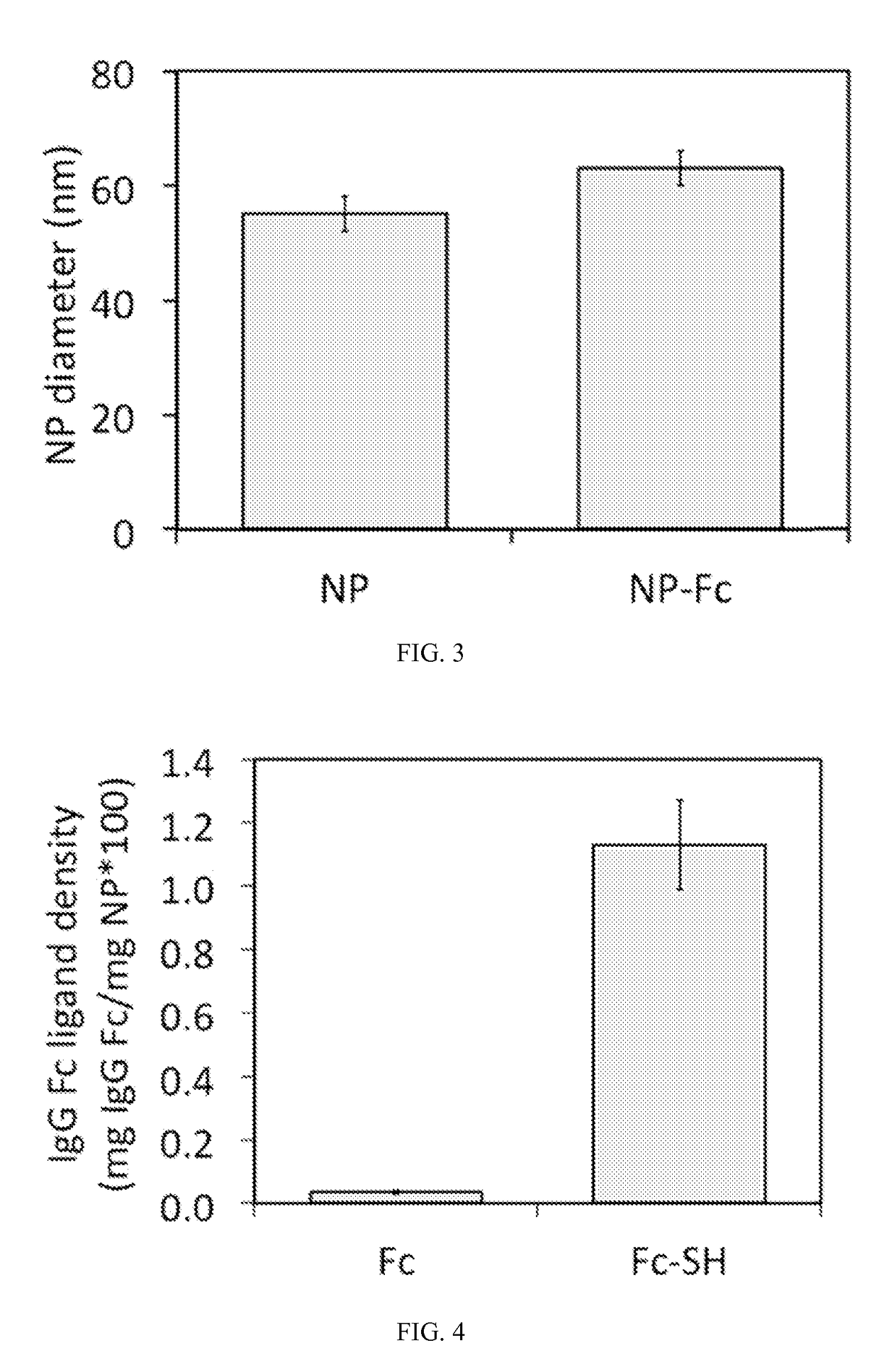Receptor-targeted nanoparticles for enhanced transcytosis mediated drug delivery
a technology of transcytosis and nanoparticles, which is applied in the direction of drug compositions, antibody medical ingredients, peptide/protein ingredients, etc., can solve the problems of limiting the absorption of nps, no way to bias systemic delivery to cancer cells, and many chemotherapeutics are extremely toxic to both cancer cells and normal cells
- Summary
- Abstract
- Description
- Claims
- Application Information
AI Technical Summary
Problems solved by technology
Method used
Image
Examples
example 1
FcRn Expression in Wild-Type Mice
[0288]Materials and Methods
[0289]For western blot analysis, sections of small intestine and colon were removed from wild-type mice after euthanasia. Intestinal epithelial cells were isolated and the protein was extracted (Booth, in Culture of Epithelial Cells, Wiley-Liss, Inc., 2002, pp. 303-335 and Pan et al., PloS One 7: e30247 (2012)). Protein concentrations in the extracts were determined using the BCA assay. Extracts were resolved on a 12% SDS-PAGE gel under reducing conditions. Proteins were transferred onto a nitrocellulose membrane. The membrane was blocked with 5% nonfat milk, probed with rabbit anti-mouse FcRn (Santa Cruz Biotech) for 1 h, and then incubated with goat anti-rabbit IgG-HRP (Santa Cruz Biotech). All blocking, incubations, and washes used PBS-T (PBS with 0.05% Tween 20). Detection was by chemiluminescence. Band intensity was quantified using ImageJ.
[0290]The immunohistochemistry was studied on small intestine tissues harvested ...
example 2
Preparation of Fc-Targeted Nanoparticles
[0293]Materials and Methods
[0294]NPs were formed from biodegradable and biocompatible amphiphilic poly(lactic acid)-b-poly(ethylene glycol) (PLA-PEG) block copolymers. PLA is a biodegradable polymer used in many FDA-approved products and forms the NP core owing to its hydrophobicity. PEG is a biocompatible polymer that remains on the NP surface owing to its hydrophilic nature and forms the NP corona. PLA-PEG was synthesized using ring-opening polymerization with a free terminal maleimide group (PLA-PEG-MAL) to conjugate the Fc portion of IgG. D,L-Lactide (Sigma-Aldrich) and MAL-PEG-OH (JenKem Technology) were used to synthesize PLA-PEG-MAL by ring opening polymerization. D,L-Lactide (3 g, 20.8 mmol) and MAL-PEG-OH (544 mg, 0.16 mmol) were dissolved in 15 mL anhydrous toluene in a round bottom flask. Tin(II) ethylhexanoate (38 mg, 0.09 mmol) was then added. The flask with condenser was placed in an oil bath, purged with nitrogen for 10 minutes,...
example 3
In Vitro Transepithelial Transport of Fc-Targeted Nanoparticles
[0299]Materials and Methods
[0300]In vitro NP transepithelial transport studies were conducted using an epithelial cell monolayer model with Caco-2 cells, a human epithelial colorectal adenocarcinoma cell line typically used as a model of the intestine for drug permeability testing. Caco-2 cells endogenously express human FcRn and human beta-2-microglobulin, and have previously been used for IgG transcytosis studies (Dickinson, et al., J. Clin. Invest., 104:903-911 (1999) and Liu et al., J. Immunol., 179:2999-3011 (2007)). Transepithelial transport studies utilized Transwell plates (Costar) with a Caco-2 (American Type Culture Collection—ATCC) cell density of 5.5×104 in media [ATCC formulated Eagle's Minimum Essential Medium with aqueous penicillin G (100 units / mL), streptomycin (100 U / mL), and fetal bovine serum (FBS, 20%)]. On the day of the transport experiment, the media was changed to HBSS pH 6.5 in the apical chambe...
PUM
| Property | Measurement | Unit |
|---|---|---|
| diameter | aaaaa | aaaaa |
| diameter | aaaaa | aaaaa |
| diameter | aaaaa | aaaaa |
Abstract
Description
Claims
Application Information
 Login to View More
Login to View More - R&D
- Intellectual Property
- Life Sciences
- Materials
- Tech Scout
- Unparalleled Data Quality
- Higher Quality Content
- 60% Fewer Hallucinations
Browse by: Latest US Patents, China's latest patents, Technical Efficacy Thesaurus, Application Domain, Technology Topic, Popular Technical Reports.
© 2025 PatSnap. All rights reserved.Legal|Privacy policy|Modern Slavery Act Transparency Statement|Sitemap|About US| Contact US: help@patsnap.com



